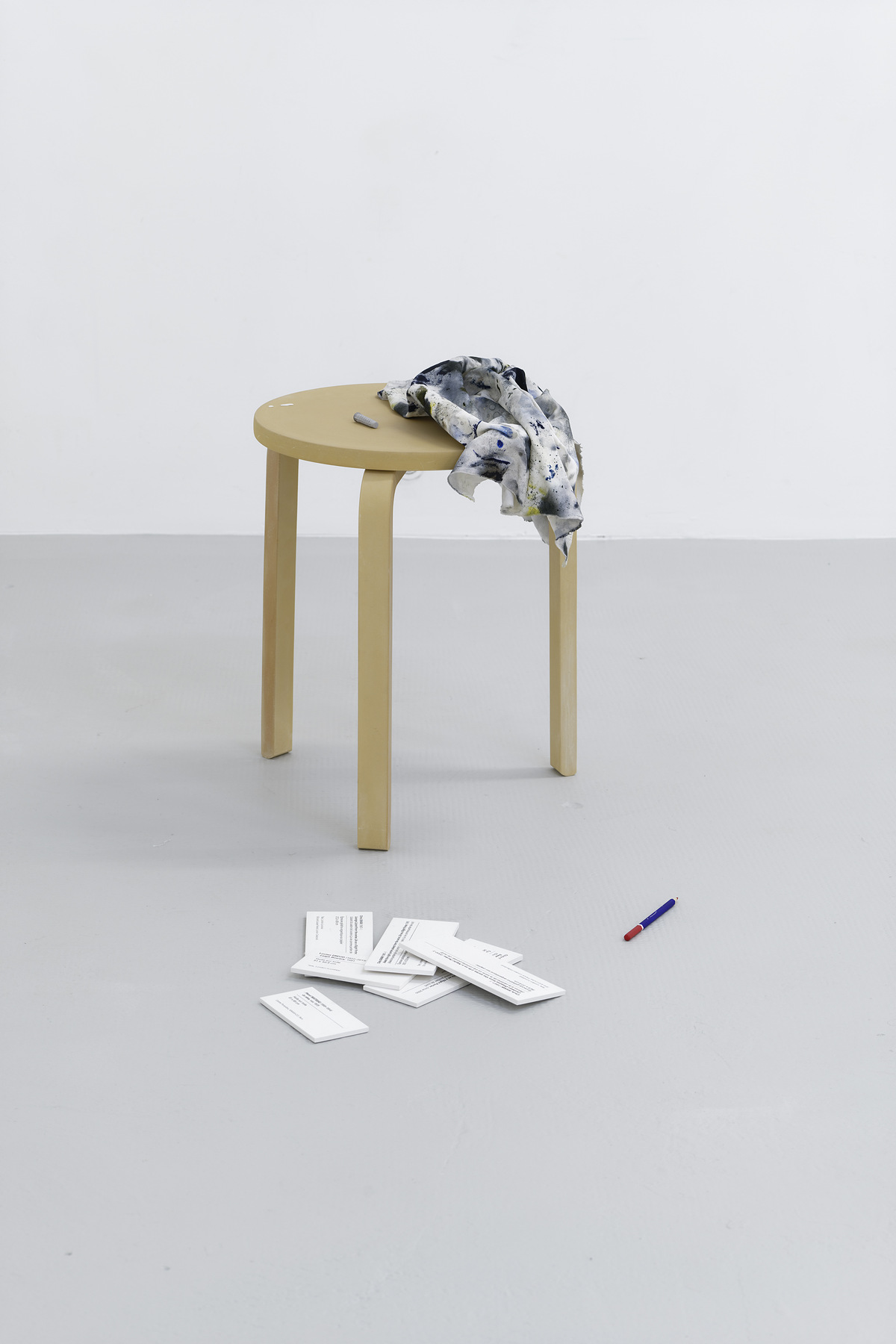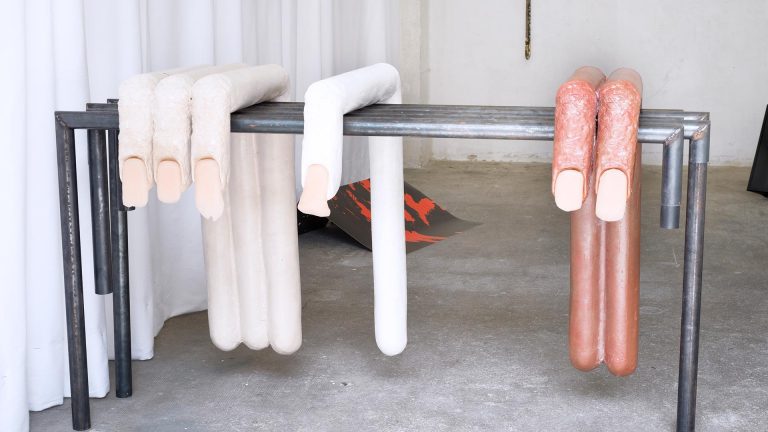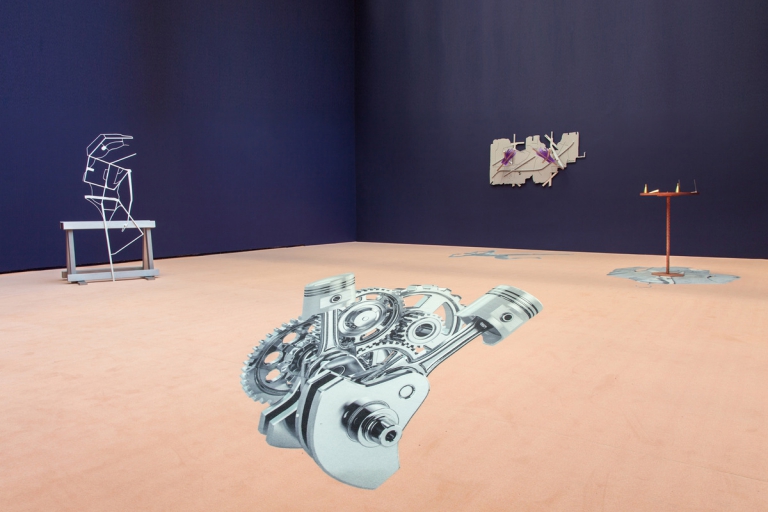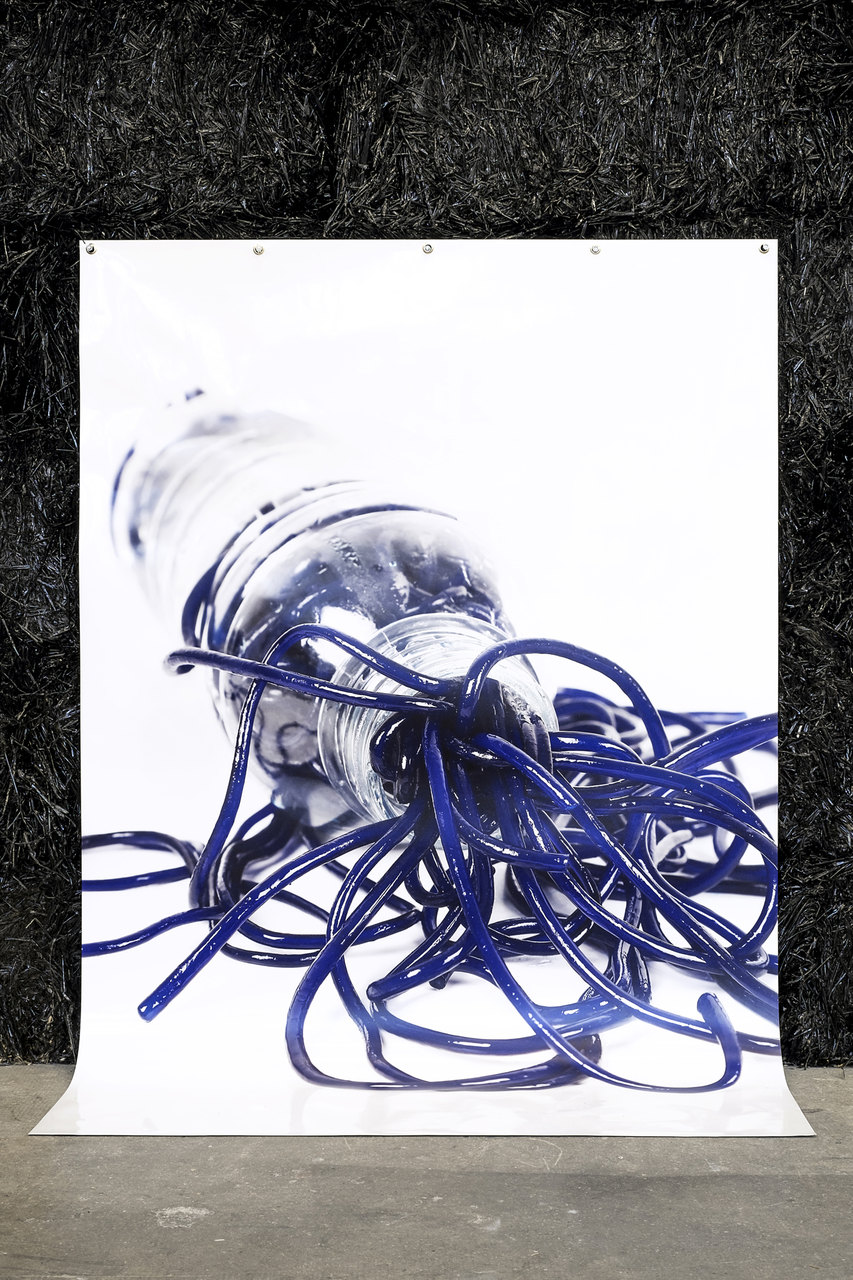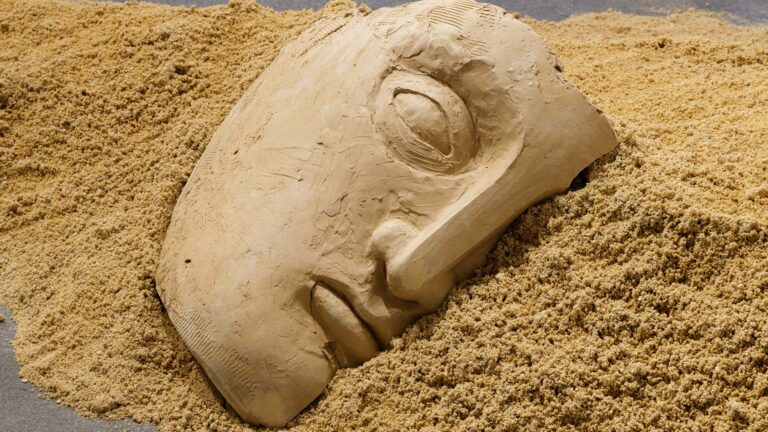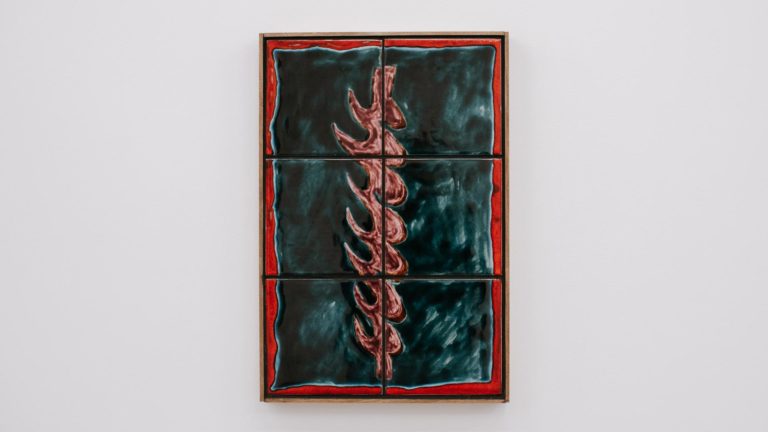Artist: Alexandre Lavet
Exhibition title: Everyday, I don’t
Curated by: In extenso, Clermont-Ferrand
Venue: Passerelle Centre d’art contemporain, Brest, France
Date: September 15, 2018 – January 5, 2019
Photography: Aurélien Mole / all images copyright and courtesy of the artist and Passerelle Centre d’art contemporain
The work of Alexandre Lavet has the particularity of fading into its environment, of avoiding any spectacular effects, while refusing all the same to disappear completely. If, since the 1960’s[3] a not negligible number of artists have chosen to put an end to their artistic practice in the face of the system of production of exhibitions, of waste, of market speculation, of decoration and even of exuberant monumentality, this has not been the path taken by Alexandre Lavet, who prefers to oppose it with effacement, discretion and vacuousness. Following the example of Douglas Huebler who declared in 1969 “The world is full of objects, more or less interesting: I do not wish to add anymore[4]”, in his own way, the artist attempts to not add anything, but by using a different strategy that does not deny the object or its materiality. These works also act through the simulation and copying of what is potentially found within standard exhibition spaces and their emblematic “white cube.” In that, he has chosen to continue to produce works that, once they are perceived in the exhibition space, could be mistaken for ready-mades. But these works are in fact anti-ready-mades, for the question at work in Alexdre Lavet’s process questions the possible alternatives to this model, where one has chosen ton add nothing to the surplus of artworks which are ever and always produced, exposed and stored in free ports, and therefore, often emptied of their meaning.
They are indeed sculptures, paintings, drawings, gestures, images or even sound pieces that make up his body of work, and which adjust themselves to the characteristics of the site in which they are shown: we pass next to a receipt which has been flippantly left on the floor… When we return toward this object, we perceive that it is in fact a simulacra produced by the artiste, who has scrupulously recopied its content with pencil. This is not a simple reproduction of a forgotten scrap of paper: through this painstaking work the artist attempts to give life to an entire world, that of the system of production and consumption, to a whole series of objects that have been purchased and of which this ticket represents the ultimate trace once these objects have been dispersed. It is an ultra minimal and quiet way of representing today’s absurd mass consumption. This ticket also has moved from the personal space of the artist (his studio) to another more collective and community-oriented space (that of openings, of exhibitions that are open to the public…) . Furthermore, this body of work includes its context of production, moments of the artist’s life, and contains the history of his artistic activity, as the cans of beer “Jupiler” testify, which are typical of openings and of the environment around Brussels, where the artist has lived for several years now. Here again, the artist reproduces exactly the logo and the colors of the brand in acrylic, while escaping the ready-made through its augmentation and through the intervention of the painter’s gesture.
The piece’s titles inform us sometimes how the works are autobiographically charged. Discreetly, the apparent insignificance of the works allows the artist’s process to be glimpsed as well as his constructions as such. They are made up of encounters, activities, jobs, volunteering, travels, passages through certain places and discoveries… In short, a presence through absence which mark the weight of episodes of time. The works spare us the effect produced by artworks that are too physical, voluminous or monumental, which impose themselves upon us and which demand of us a state of passivity in the face of their very existence.
At the Passerelle Contemporary Art Center, the exhibition Everyday, I don’t offers as part of its program, a space which at first glance appears to be empty. Which can seem strange in the context of an exhibition visit, where the visitor, who is going from one exhibition to another, normally expects to see artworks. Consequently, the empty space is troubling. The artist stages a possible narrative of the exhibition space, which is waiting between installation and deinstallation, where the visitor runs the risk of entering only to come upon a space which is apparently empty of artworks. Are we allowed to go in? Do we dare? The seeming banality of the objects that are present leaves us thinking, and simultaneously questions the status of the exhibition and that of the artwork. The negative impulse of the title could indeed indicate the artist’s decision to do nothing at all, which would explain this state of latent abandon. He invites us in the form of a paradox, to ask ourselves about the concept of artistic work, which is often imperceptible and difficultly quantifiable. Dispersed and fading into their environment, the artworks invite the visitor in this case to make an effort to seek something, to question the status of the artwork and of the artist in the standardized context of the exhibition space at the moment of a spectacular and consumerist turning point in culture.
Alexandre Lavet, The Truth of Mankind, 2018 — Synthetic plaster, toner transfer – 0,5 x 6 x 12 cm each; Les oubliés, 2016 — Graphite, varnished wood, acrylic paint – 27,5 x 8 x 2,5 cm; Inemuri, 2018 — Synthetic plaster, pigments – 45 x 38 x 38 cm; A dedication to my mother, 2016 — Print on cotton Half Panama, stiffener – 10,5 x 45 x 31 cm
Alexandre Lavet, L’introduction frontale, 2018 — Graphite on folded Clairefontaine 60g – 24 x 17 cm; Les oubliés, 2018 — Synthetic plaster, pigments, acrylic paint – 13,5 x Ø 0,8 cm; De grandes idées, 2018 — Synthetic plaster, pigments, toner transfer, color pencil – 1,7 x 18 x 16 cm; Colorants LW53, 2018 — Graphite and color pencil on folded Awagami Silk Pure White 62g, staple – 3,5 x 12,5 x 8 cm; Entrecôte, 2018 — Graphite on folded Awagami Silk Pure White 62g – 2,2 x 13,3 x 10 cm; All the good times we spent together, 2016 — Acrylic paint on aluminium – Dimensions variable
Alexandre Lavet, Acte n°36, «Leave a cigarette smoked during the installation», 2015 — Marlboro Gold – 3,7 x Ø 0,8 cm; Acte n°9, «Sweep the exhibition space and leave the collected remains», 2013 — Sweepings from the exhibition space; L’été indien, 2016 — Folded and cutted baking paper – Dimensions variable; Loctite flex gel, 2016 — Graphite and color pencil on folded Awagami silk pure white 62g – 6,5 x 13,5 x 10 cm; Professeur Sekou, 2016 — Graphite on Awagami silk pure white 62g – 7,4 x 10 cm
Alexandre Lavet, Les oubliés, 2018 — Synthetic plaster, pigments, acrylic paint – 13,5 x Ø 0,8 cm; Les oubliés, 2018 — Pinewood, Indian ink, acrylic paint, aluminium foil, varnish – 5 x 5,3 x 2,3 cm
Alexandre Lavet, Acte n°16 “Peindre des zones définies par des formats présents dans l’exposition”, 2015 — Alkyde and acrylic paint on wall – 8 paints of 30 x 40 cm each
Alexandre Lavet, Les oubliés, 2013 — Enameled porcelain – dimensions variable; Les oubliés, 2016 — Synthetic plaster, indian ink – 1 x 4 cm; A dedication to my mother, 2016 — Print on cotton Half Panama, stiffener – 10,5 x 45 x 31 cm; Inemuri, 2018 — Synthetic plaster, pigments – 45 x 38 x 38 cm; The Truth of Mankind, 2018 — Synthetic plaster, toner transfer – 4 elements, 0,5 x 6 x 12 cm each; Les oubliés, 2018 — Synthetic plaster, pigments, acrylic paint – 13,5 x Ø 0,8 cm
Alexandre Lavet, Les oubliés, 2016 — Graphite, varnished wood, acrylic paint – 27,5 x 8 x 2,5 cm; The Truth of Mankind, 2018 — Synthetic plaster, toner transfer – 4 elements, 0,5 x 6 x 12 cm each; Inemuri, 2018 — Synthetic plaster, pigments – 45 x 38 x 38 cm

